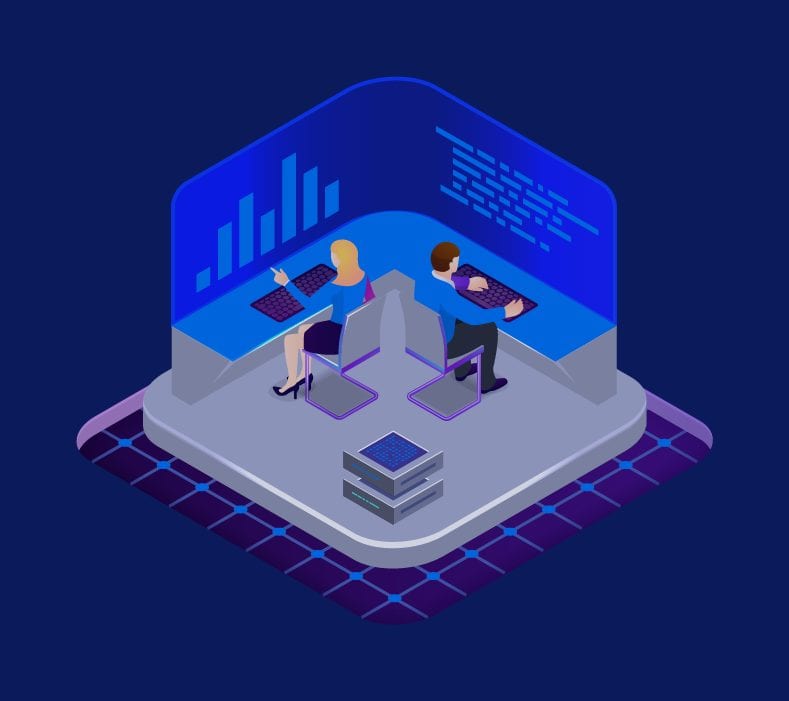Why AI Needs Your Legacy Data – And Why Pulsar Makes Data Exploitation so Easy
More and more companies are looking to transform digitally for a variety of reasons. They can benefit from wide management solutions, reduced downtime, improved efficiency, and predictive approaches for better maintenance, and so much more. Pulsar on Data Exploitation has vastly grown over the recent years.
However, a lot of enterprises aren’t ready to transform digitally. Why is this? The main reason is the fast business pace along with unorganized data required to make accurate decisions. Digital solutions were more accessible in the past.
The introduction of cloud computing, multi-modal delivery, and many other technologies have led to various complex digital environments that are massive. In other words, it’s no longer possible to use manual processes within IT environments.
Challenges of implementing AI and data exploitation
To deal with the issues of large-scale digital environments and rapid pace, enterprises are setting up processes that rely on machine learning and artificial intelligence. Even though AI automation and ML algorithms are crucial for modern digital transformation, implementing them isn’t easy.
First of all, machine learning algorithms don’t have the necessary sophistication to handle the modern cloud-based environment that’s containerized and ephemeral. Machine learning applications need to turn into artificial intelligence.
However, for this to happen, you need to have clean and actionable data that can automate processes. Acquiring quality data is a challenge of its own. Enterprises that aren’t able to do this will encounter constant problems in the future.
The need for legacy data
Using algorithms on real-time data is important. However, your AI and ML algorithms also need historical data to make the right decisions. If you don’t use legacy data combined with real-time data, it will be impossible to get the right context and get value.
In other words, enterprises that don’t do this will be back to square one. Legacy data is still generating tons of important information daily, and it is the backbone of AI automation. It often contains critical applications and business information.
Many companies make the mistake of ignoring legacy data and see it as outdated. From a technical point of view, this might be true, but it doesn’t mean that this data isn’t a valuable resource that you can use to improve various processes.
Challenges of using and managing legacy data exploitation for AI and cloud
Across many enterprises, there are legacy systems that are the core infrastructure holding legacy data. These platforms can be integrated with modern digital platforms so that the data can be used for analytics, artificial intelligence, machine learning applications, data science, and so on.
Modern platforms give the best results when they are fed with quality data. Not only does this mean that data needs to be fed precisely and in a structured way to be usable, but it needs to come from all relevant sources.
However, many potential complications can occur when integrating legacy data sources with modern digital platforms. Legacy data is often fragmented over time and scattered in lots of data silos. This incomplete data can lead to a variety of mistakes and issues.
The longer this happens, the more problems will arise. Another common issue is that legacy data comes from many different sources. Not all of it is standardized the same way, and even with the right standards, there is a constant evolution in the way data needs to be delivered.
Solution: Apache Pulsar
Apache Pulsar is a distributed messaging and streaming platform that’s cloud-native and open-source. It’s designed to streamline data movement and is used by various enterprises and their software development teams.
Pulsar brings some of the most benefits of traditional systems combined with the key features of systems like Kafka. In other words, it brings the best of both worlds within a cloud environment. Since it became open-source, Pulsar has become more popular, and many teams are considering switching to Pulsar vs. Kafka.
There are a lot of benefits that Pulsar offers. However, when it comes to data movement and using legacy data for AI, the key feature that makes Pulsar so good is tiered storage. Here’s why.
Pulsar tiered storage and infinite retention!
Pulsar has a multi-tier architecture that lets users add new layers. All platforms that want to achieve great performance need to use the latest disks (SSD), as all the data or messages are written on disks and retrieved from them.
However, as we mentioned earlier, legacy data or old messages that need to be kept for further use still present a problem. In many cases, companies need to keep their legacy data infinitely, and storing all that data on some of the latest disks is really expensive.
That is why Pulsar uses tiered storage to offload legacy data to cheaper storage. When this legacy data is required, Pulsar retrieves it automatically to the user from that same data storage. The end-user doesn’t see any difference in consuming topics from data stored on tiered storage or directly on Pulsar’s cluster.
Offloading manually
Users can choose individual topics for manual offloading. Users specify the maximum amount of data that can be kept on Pulsar’s cluster for that specific topic. If the threshold is exceeded, topic segments will be automatically moved to long-term storage until there’s enough free space.
Automatic long-term storage
Pulsar also lets users set up automatic data movement to long-term storage. Administrators do this by setting up data size threshold rules on namespaces. When they do this, all the topics within the namespace with Pulsar cluster data exceeding the threshold will be moved to long-term storage until they no longer exceed the threshold.
Conclusion
When all is said and done, Pulsar removes various obstacles that legacy data exploitation presents for machine learning and artificial intelligence applications. We can say with certainty that Pulsar is the future of AI and ML. It’s important to make these technologies available, scalable, and profitable.


